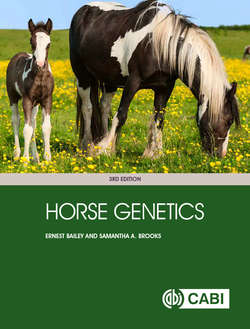Читать книгу Horse Genetics - Ernest Bailey - Страница 20
На сайте Литреса книга снята с продажи.
Ancient DNA
ОглавлениеSince the skeletal remains of equids are often incomplete and therefore difficult to assign to a specific species (horse, donkey, zebra, etc.) the study of DNA in skeletal remains has been a boon to archaeology. At the time of death, the organic material in the body begins to degrade. However, DNA found within bone is often protected from harsh environmental exposure and may be recovered and sequenced after thousands of years. These types of material are called ancient DNA (aDNA) and their survival depends upon favorable environmental conditions such as freezing in permafrost, mummification, desiccation of remains, or simply burial in soil that is low in acid and lacking other elements that degrade DNA. Successful study of aDNA in the laboratory requires a very clean environment to avoid contamination with modern DNA, complex corrections for naturally occurring chemical changes, as well as sophisticated computer analyses (bioinformatics) to factor out contaminating DNA sources such as bacteria or plant material that may have been present at the burial site. Horse remains are plentiful in the archaeological record. The quality of DNA recovery is correlated with age and aDNA is routinely recovered from samples that are hundreds of years old to tens of thousands of years old. The record for the oldest ancient mammalian DNA sequence ever reported is from a 700,000-year-old horse (Orlando et al., 2013).
